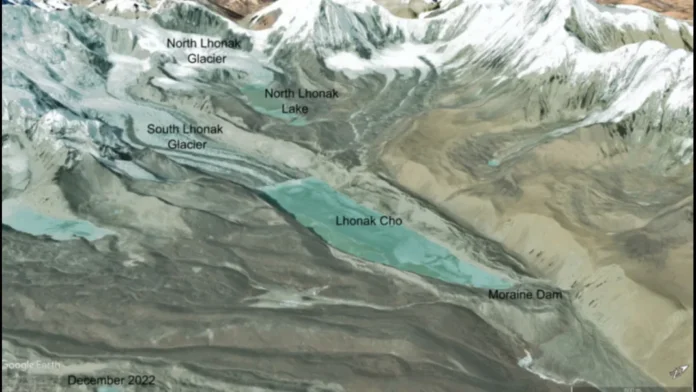GANGTOK, Dec 5: An expedition team from the Sikkim government’s Science & Technology Department reached Muguthang in North Sikkim’s Lhonak Valley on Wednesday to assess the impact of glacial floods and explore mitigation measures. The team was tasked with studying the behavior of Lhonak Lake and its potential to trigger devastating floods, which can carry debris, sediment, and boulders with massive destructive force.
The team’s investigation focused on whether Lhonak Lake’s behavior aligned with typical glacial flood patterns. Observations indicated that floodwaters from Lhonak Lake slowed down as they passed through wide areas of the valley between Goma and Dolma Sampa sections. This natural dissipation of force led to the deposition of debris, reducing the flood’s destructive impact downstream. However, below Dolma Sampa, the floodwaters picked up momentum and debris, causing widespread devastation further downstream.
Additionally, the team analyzed the sub-surface geology at Dolma Sampa and measured the discharge of the Lhonak River. These findings will be crucial in evaluating the feasibility of a retention structure at Dolma Sampa to regulate floodwaters and protect downstream infrastructure.
The expedition included experts in geology, ecology, engineering, hydrology, and remote sensing from the Departments of Science & Technology, Mines & Geology, and the National Disaster Management Authority. Despite freezing temperatures of minus 10 degrees Celsius and high winds, the team camped at 14,000 feet in Muguthang to conduct their studies.
The team will return to Gangtok on Thursday with critical data that will inform future strategies for managing glacial flood risks. Their findings will form the basis of a concept note that will undergo wider consultation and feasibility assessments.
This expedition is part of the Government of Sikkim’s ongoing efforts to build resilience against glacial floods. It marks the fourth such expedition, aimed at safeguarding lives, livelihoods, infrastructure, and the environment. The Lhonak Lake had burst in October 2023, triggering a flash flood in the Teesta River that claimed more than 40 lives and caused large-scale destruction of roads and communication infrastructure in North Sikkim. Forty glacial lakes in the state have been identified as high-risk by the central government.

